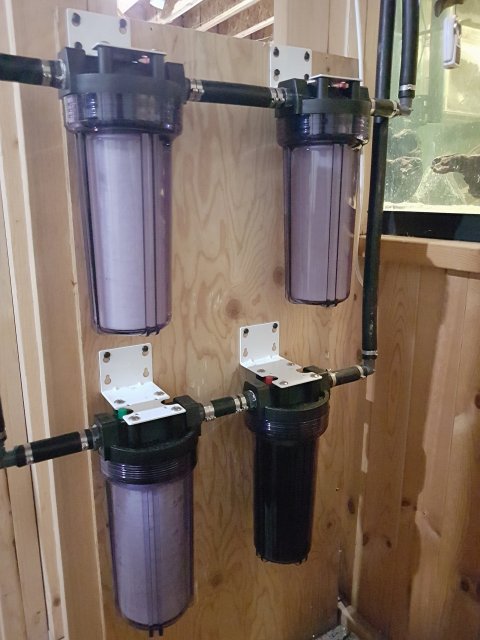I know this is an old thread but i was going to use carbon to purify the water for the drip system to my tank and this is what i found...quoted from watertreatmentguide
"Activated carbon can remove and destroy residual disinfectants (chlorine and chloramine) through a catalytic reduction reaction. This is a chemical reaction that involves a transfer of electrons from the activated carbon surface to the residual disinfectant. In other words,
activated carbon acts as a reducing agent.
Activated carbon's removal of chlorine reduces the chlorine to a non-oxidative chloride ion. The reaction is very fast and takes place in the first few inches of a new activated carbon bed. (Where removal of organics by activated carbon takes minutes, removal of chlorine literally takes seconds). The chlorine capacity of new activated carbon is 1 pound of chlorine per pound of carbon at a flow rate of 3 to 5 gpm/cu.ft. and a bed depth of 3 feet.
Chloramine removal by activated carbon is a much slower reaction. The predominant species of chloramine in city water supplies (pH about 7 to 8) is monochloramine. The reaction with activated carbon and monochloramine also renders a non-oxidative chloride ion. Since the rate of reaction is considerably slower, the flow rate should be 0.5 gpm/cu.ft. and the bed depth greater than 3 feet"
doing the math to remove chloramine from the water at 1gph you would need activated carbon of 4 inches in depth, less if you are just removing chlorine.
hope this helps others.



